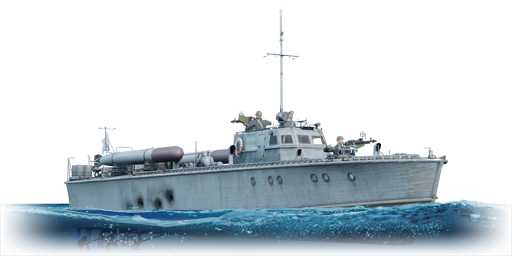

The D-3 Motor Torpedo Boat was developed by the Soviet Navy to replace the G-5 in the middle of WW2. It featured improved endurance and firepower compared to the G-5. The D-3 boasted two 12.7 mm DShK machine guns instead of one, along with the ability to carry depth charges alongside the torpedoes. Some of the D-3 boats were reported to be fitted with lend-lease 20 mm Oerlikon autocannons. In 1942, the Soviet Navy introduced an improved version of the D-3 hull, with a modified internal layout and additional engines. Subsequently, in November 1942, the sub-chaser variant of the improved D-3 hull, known as the OD-200, entered production and served with the Soviet Navy until the late 1950s.
The boat was introduced during Update 1.79 "Project X" when the Soviet fleet was implemented into the game. Its armament consists of two 12.7 mm DShK machine guns, two 533 mm 53-38 torpedoes, and four BB-1 depth charges. Its gameplay resembles that of other MTBs in this BR, primarily utilizing machine guns to destroy enemy boats and using torpedoes and depth charges only in certain situations. While this boat is not as fast as its predecessor (G-5), it can break through strategic points thanks to its two heavy machine guns.
| Belt | Belt filling | Armor penetration (mm) at a distance: | |||||
|---|---|---|---|---|---|---|---|
| 10 m | 100 m | 500 m | 1000 m | 1500 m | 2000 m | ||
| AP-I/API-T/IAI | 30 | 29 | 26 | 23 | 20 | 19 | |
| IAI/IAI/IAI/API-T | 29 | 28 | 25 | 22 | 19 | 17 | |
| API-T/AP-I/IAI/AP-I | 30 | 29 | 26 | 23 | 20 | 19 | |
4 × BB-1 depth charge








Seakeeping | |
|---|---|
Unsinkability | |
|---|---|
Firepower | |
|---|---|